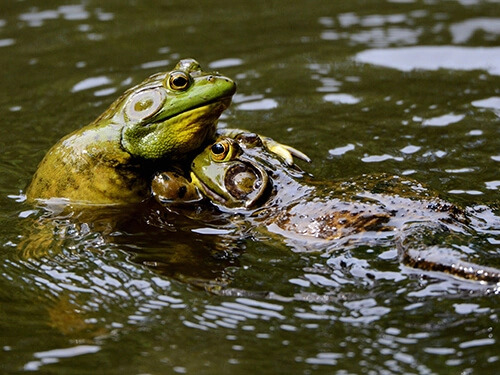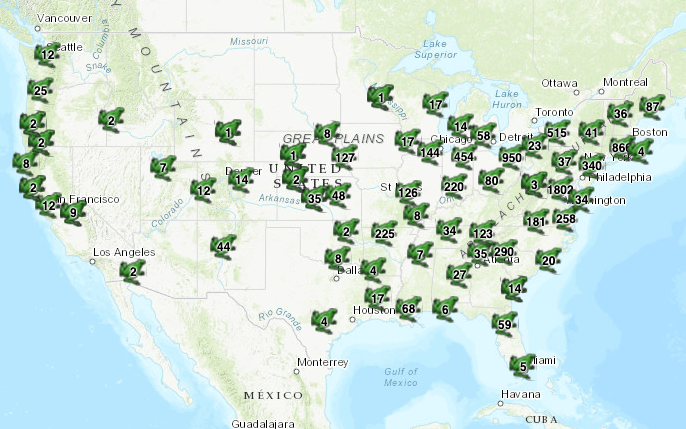Frog Eat Frog World

About this Inquiry
The American bullfrog lives in mostly aquatic ecosystems and is active during the warmer months of the year. The bullfrog will eat almost anything and is a voracious eater, often competing with other frogs and organisms that have similar ecosystem requirements. In some places, the bullfrog is considered an invasive species, disrupting the normal predator-prey relationships in ecosystems. Using maps and graphs of large data sets collected in FrogWatch, students will determine the range, preferred land cover, and proximity to water of the American bullfrog to figure out the bullfrog’s requirements for food, water, and other resources. Then, using graphs and maps, they will identify patterns in the data where the bullfrog species’ range overlaps with other frogs, thus putting those frogs at risk for being eaten by the bullfrog or outcompeted for resources. This Inquiry is designed for middle school students.
Instructional Days
3 days
Learning Goals
- Analyze and interpret data to provide evidence for the geographic range and preferred habitats of American bullfrogs.
- Use graphical displays of large data sets to identify temporal and spatial relationships as they investigate the locations of bullfrogs in relation to other native frog species.
- Evaluate competing solutions to control bullfrog populations based on jointly developed and agreed-upon criteria.

Type of Analysis
- Mapping – Spatial Analysis
About this Citizen Science Project:
FrogWatch is the Akron Zoo’s citizen science program and provides individuals, groups, and families opportunities to learn about wetlands in their communities by reporting on the calls of local frogs and toads. Citizen scientists are trained and then volunteer to listen for frogs and toads during evenings from February through August and submit these observations to the FieldScope FrogWatch project. The data are collected as an effort to monitor populations of amphibians, as many have experienced dramatic declines in recent decades.
FrogWatch has established a network of chapters across the United States, hosted at zoos and aquariums, nature centers, and similar organizations. Chapters are led by chapter coordinators–trained experts in the program–who mentor volunteers in their community and host training sessions to recruit new ones. FrogWatch-trained volunteers collect data using the same protocol in order to track similar variables, such as habitat, call, and time of day.